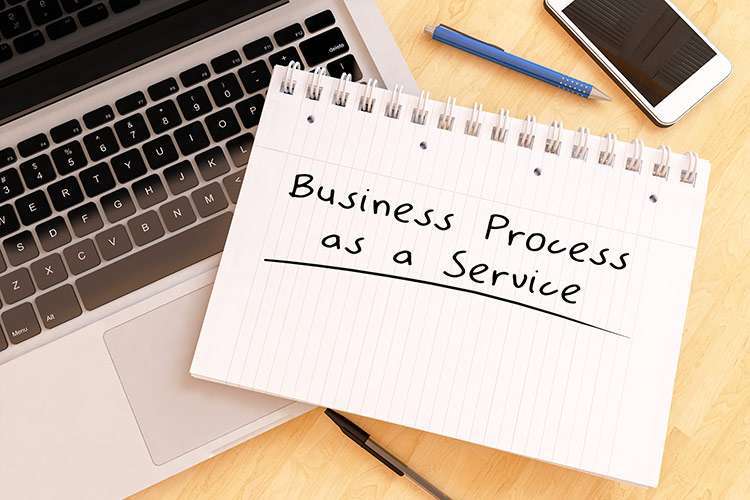-
Streamlining Financial Processes: Comparing BPA, SaaS, BPO, and BPaaS
If you’ve been researching software options for managing your financial processes, then you’ve probably run across terms like Business Process Automation (BPA) and Software-as-a-Service (SaaS). You’ll also come across related terms, like Business Process Outsourcing (BPO) and Business Process as a Service (BPaaS). Sometimes it might seem like those terms refer to the same thing, while other times they seem like different things.
There is an overlap between BPA and SaaS. NextProcess’s software, for example, is both. But they’re not exactly the same thing, and not every BPA software will also be SaaS, nor will every SaaS product be BPA software. In this article, we’ll look at the differences and similarities between the two terms so you can better understand your options.

BPA Defined
As the name suggests, business process automation software automates key business processes. Typically, the software is designed for a specific department. For example, accounts payable (AP) BPA software automates processes associated with the AP department including invoice receiving, data entry, matching invoices with POs, tracking payment deadlines, paying invoices that fall within approval thresholds, and sending approval reminders for payments that require authorization.
This sort of software might be something that you purchase once and install on your company’s computers (in-house or on-premises software). It could also be a software program that your company purchases a subscription to use. Those subscription-based software programs might be something you can download for offline use, or they could be cloud-based, requiring an internet connection to access the software program.
SaaS Defined
Software-as-a-Service is a type of cloud-based software. Familiar examples include Google G-Suite and Microsoft Office 365. If you’re using SaaS software, you’ll typically access it through an internet browser. Not all SaaS is used for business process applications, but if you get cloud-based BPA then it’s almost certainly an example of SaaS.
With SaaS, the software is hosted by your software provider. Your company doesn’t need to dedicate any hardware space to the software or worry about backing up files on local hard drives (though you can make backups if you want). In essence, you “rent” the software and everything that it’s able to do for your company.
What about BPO and BPaaS?
I also mentioned Business Process Outsourcing (BPO) and Business Process as a Service (BPaaS) in the intro, so let’s take a quick look at those definitions.
BPO refers to outsourcing business processes from your company to another company. In other words, it means hiring a third party to handle certain business activities for your company. For example, companies might outsource tech support rather than having an in-house IT department, or they might outsource payroll rather than dedicating an on-premises employee to the task.
SaaS is one type of outsourcing. Instead of outsourcing a business process to a third party entirely (as with offshore outsourcing), you’re “outsourcing” the activity of BPA to a software supplier but your in-house employees will run the software and use it to manage your business processes.
BPaaS refers to business process outsourcing services that are delivered through the cloud. Essentially, it is another word for BPA software that uses the SaaS model. It’s not a common term yet, but you might start seeing it more often. Usually, you’ll find this type of software referred to as “cloud-based BPA” or “SaaS for business process automation.”

Why Choose the SaaS model for BPA?
Business process automation is a good move for companies in the digital age. Automating business processes saves your company time and money by speeding up processing, reducing error rates, streamlining workflows, and more. This type of software makes your employees’ jobs easier, freeing them up from repetitive, mundane tasks so they can focus on more interesting and value-added work.
Not all automation is created equal, though. If you were one of the companies that implemented early automation software, you might already be seeing issues with it. In-house BPA software can be challenging for IT to keep up to date or to integrate with new software processes, such as an ERP system.
The SaaS model offers a different approach to process automation. Instead of purchasing one-time use of a software program that will eventually be outdated, you’ll subscribe to a software service that includes a variety of advantages.
Advantages to SaaS
If you’re looking to upgrade processes you previously digitized or implement new BPA software, the Software-as-a-Service model has several distinct advantages for business process automation.
For one thing, the software never gets outdated since you’ll get immediate access to new updates every time the SaaS provider improves the software. This also means you’ll get more up-to-date cybersecurity than you might be able to manage in-house. The software provider specializes in providing secure, user-friendly software and your company gets to take advantage of new updates as soon as they happen. For example, NextProcess recently rolled out an innovative new feature for processing purchase order acknowledgments in response to feedback from our customers who requested this functionality.
Cloud-based software also means all the users have access to the same system, which updates in real time. This eliminates problems such as different people having different versions of the same file or two people working on the same task because they didn’t know the other was taking care of it. Individual users can also log in to the software from any internet-enabled device, making it much easier to work from home or when traveling.
In addition to the advantages of SaaS BPA, NextProcess offers another advantage you won’t get with most other software. Our modules for automating capital project management, procurement & purchase orders, accounts payable, travel & expense, and payment disbursements all work seamlessly together. They also integrate seamlessly with all major ERPs. This enables your company to create a true end-to-end software solution for financial management. Contact us today to learn more and set up a free demo.